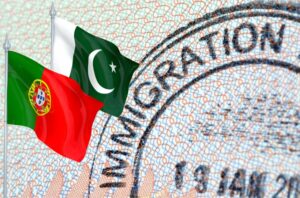Embarking on a European adventure requires Indian travelers to navigate getting a Schengen visa from India. This coveted visa is your ticket to experiencing the rich tapestry of culture, history, and natural beauty spread across 26 European countries that form the Schengen Area. Whether you’re planning to marvel at the architectural wonders, indulge in diverse culinary delights, or conduct business across borders, securing a Schengen visa is essential for your sojourn.
We explain the application process, from compiling the necessary documents to understanding the various visa options, ensuring a smooth journey towards your European dream.
How To Apply For A Schengen Visa As An Indian
If you’re an Indian citizen itching to explore the Schengen Area, which includes 26 European countries with no border controls, you’ll need to get through the Schengen visa application process. This visa lets you stay for up to 90 days within a 180-day period for tourism, business, or transit. If you’re a frequent traveler, you might need a multiple-entry visa, and if you’re planning to stay longer, you’ll have to look into a work or student visa.
Required Documents Checklist
Starting your application means getting all your documents in order. You’ll need a valid passport with at least three months left after your trip and a couple of blank pages. A filled-out and signed visa application form is the foundation of your application.
To show your plans in the Schengen area, you’ll also need to show a clear travel itinerary with confirmed flight and hotel bookings. Proving you have enough money is crucial, so recent bank statements are a must. You’ll also need to show where you’re staying, either with hotel reservations or an invitation from someone living there.
If you’re working, you’ll need a letter from your employer that talks about your job, salary, and the leave they’ve given you. If you’re self-employed, you’ll have to provide your business registration.
Completing the Application Form Accurately
It’s super important to fill out the Schengen visa application form correctly. Any mistakes or missing info can cause delays or even get your visa denied. Make sure everything you put down matches your documents and clearly shows why you’re traveling.
Scheduling an Appointment at the VFS Center
After your form is ready and your documents are together, you’ll need to book an appointment. You can do this on the VFS Global website, which manages visa applications for Schengen countries. It’s best to schedule this before your travel date.
You should apply at most six months and at least fifteen days before your trip. The visa fee for Indian adults is USD 87.50. Still, there are discounts for kids; some people, like students and researchers going to certain events, don’t have to pay.
Schengen Visa Photo Requirements
Remember the photo you need for your visa application. You have to submit two recent, identical passport-sized photos that are 35x45mm. They should be in color, with a plain background, and your head should take up most of the photo.
You need to look straight at the camera with a neutral face. The photo quality matters a lot, so it should be a high-res print on good paper. Your skin tone should look natural, with no glare, shadows, or red eyes.
If you wear headgear, it can’t hide your face, except for religious reasons. Even then, your face from chin to forehead should be visible.

Schengen Visa Options For Indians
Types of Schengen Visas for Indian Passport Holders
For frequent visitors to the Schengen Area, a multiple-entry visa can be a convenient option, eliminating the need to reapply for each trip.
Longer-term stays for purposes such as education or employment necessitate applying for the appropriate visas designed for extended durations.
Children aged 6 to 11 cost a reduced USD 44 visa fee, while those under six are exempt from it.
Exemptions from the visa fee also extend to the following:
- Individuals under 25 attending seminars, conferences, or events.
- Students, teachers, and researchers involved in educational or scientific pursuits.
Schengen Area Countries You Can Visit
With a Schengen Visa, you gain entry to a zone of 27 European countries, allowing you to traverse multiple nations like Austria, Belgium, and France without border checks.
The visa also grants access to picturesque Atlantic territories such as the Canary Islands and Madeira, offering a gateway to the diverse landscapes and cultural heritage of Europe and its associated islands.
Schengen Visa Eligibility Criteria
Eligibility for a Schengen Visa requires adherence to specific criteria and the provision of various documents. A valid passport with at least two blank pages is necessary, and it must remain valid for three months beyond the intended departure from the Schengen Area.
A detailed travel itinerary is essential, outlining your activities within the Schengen Area. Proof of sufficient funds, typically through recent bank statements, is required.
Accommodation evidence, such as hotel reservations or an invitation from a host in the Schengen Area, must be provided. Proof of employment, which could be a letter from your employer or business registration documents if you are self-employed, is also necessary to demonstrate ties to your home country. These requirements ensure that your visit is for legitimate purposes, that you are financially capable, and that you intend to return to India.
Visa-Free Access To The Schengen Area Through Investment Programs
Golden Visas have become a way for Indian citizens to get easier access to the Schengen Area. These programs let you obtain residency and potentially citizenship in a foreign country by making a significant financial investment. Countries like Portugal, Spain, and Greece are known for their successful Golden Visa programs, which give you the right to live, work, and study in a secure environment and extend these rights to your family members.
Citizenship By Investment Options For Indians
Acquiring a second citizenship can greatly facilitate international travel for Indians with financial resources. Citizenship by investment programs are designed for wealthy individuals, offering them a path to citizenship through naturalization. This process usually requires a significant economic contribution that meets the host country’s criteria.
A second passport can simplify the business visa process and reduce the need for multiple visa applications when traveling for work or leisure. Malta, for instance, has streamlined its process, allowing Indian citizens to acquire a second passport more quickly and easily. With this passport, you can enjoy visa-free travel to numerous countries.
However, applicants must undergo rigorous background checks, possess a clean criminal record, and demonstrate a stable financial background. Additionally, the investment must be maintained for a minimum period as specified by the host country’s regulations.
Residency By Investment Options For Indians
Residency by investment options offers an alternative to direct citizenship, granting Indian investors the right to live in a foreign country and, by extension, travel visa-free within the Schengen Area. Countries offering Golden Visas require a minimum investment—sometimes starting from USD $600,000—granting a permanent residence permit upon successful application.
The allure of high-quality education and a secure lifestyle are significant incentives for Indian investors considering residency by investment. The process includes comprehensive checks to ensure applicants have not been previously barred from any country and can financially sustain themselves in their new country of residence.
Portugal’s and Spain’s Golden Visa programs are particularly attractive as they offer extensive travel freedom within the Schengen zone. Your investment must align with the qualifying criteria of the chosen country and be sustained for the required duration to ensure the continuity of your residency rights.

What Is the quickest way to get a Schengen visa?
Applying for a Schengen visa through Lithuania or Estonia can significantly reduce wait times for both appointments and application decisions, making them among the quickest options for obtaining a Schengen visa. Lithuania is known for shorter wait times, while Estonia boasts a high approval rate of over 97% and receives fewer visa applications, which can contribute to faster processing.
While the standard processing time for a Schengen visa is about 15 days, it’s essential to apply well in advance of your planned trip due to possible extensions up to 30 or even 60 days in more complex cases. To avoid delays, consider applying at a time when there’s less likelihood of a backlog and ensure that your documentation is thoroughly prepared to expedite the review process.
Seamless Journey Ahead
With the right Schengen visa strategy, you can embark on your European dream.
Remember to dot your i’s and cross your t’s when gathering your documents and filling out your application. While the process may seem daunting, timely and meticulous planning can make it a smooth sail. By carefully following the steps outlined, from choosing the right visa type to nailing the photo requirements, your efforts can culminate in that coveted Schengen visa stamp in your passport.
Whether it’s walking through the cobblestone streets of Rome or gazing at the Northern Lights in Finland, your adventures await. Get ready to create memories that last a lifetime, all starting with that all-important piece of paper that opens the doors to the Schengen Area!
FAQs
Is A Schengen Visa Easy To Get From India?
Obtaining a Schengen visa from India can be straightforward if all the required documentation is in order and the applicant meets the eligibility criteria. The process involves filling out an application form, submitting necessary documents (such as proof of accommodation, travel itinerary, and financial means), and attending an interview. The ease of getting a visa largely depends on the completeness and accuracy of your application.
How Much Does A Schengen Visa Cost In India?
The Schengen visa fee for Indian citizens is USD 87.50 for adults and USD 44 for children aged 6 to 12. Children under 6 are exempt from the visa fee. Please note that these fees are subject to change and may vary by visa type and applicant age.
How Long Will It Take To Get a Schengen Visa From India?
The processing time for a Schengen visa from India typically takes about 15 calendar days from the date of the application. However, this timeframe can extend up to 30 days if further scrutiny is required and, in exceptional cases, up to 60 days. It’s advisable to apply well in advance of your planned travel date.
Which Schengen Visa Is Fastest To Get From India?
The processing time for Schengen visas from India is generally uniform across visa types, with most applications decided within 15 calendar days. However, the speed of processing can vary based on the consulate’s workload, the applicant’s specific circumstances, and the completeness of the application. Expedited visa services are not typically offered, so it’s best to apply as early as possible and ensure your application is complete to avoid delays.





